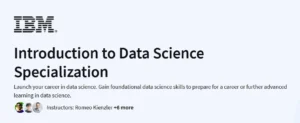What will you learn in this Convolutional Neural Networks Course
Foundations of Convolutional Neural Networks:Understand the building blocks of CNNs, including convolutional and pooling layers, and how to stack them effectively for image classification tasks.
Deep Convolutional Models: Case Studies:Explore advanced architectures like ResNets and Inception, learning the practical tricks and methods used in deep CNNs.
Object Detection:Apply CNN knowledge to object detection, delving into algorithms like YOLO for real-time detection tasks.
Special Applications: Face Recognition & Neural Style Transfer:Discover how CNNs can be applied to fields like art generation and face recognition, implementing algorithms for these specialized tasks.
Program Overview
1. Foundations of Convolutional Neural Networks
⏳ 9 hours
Implement foundational layers of CNNs (convolution, pooling).
Stack layers to build deep networks for image classification.
2. Deep Convolutional Models: Case Studies
⏳ 8 hours
Study advanced CNN architectures like ResNets and Inception.
Learn practical techniques from research papers.
3. Object Detection
⏳ 7 hours
Understand object detection challenges and solutions.
Implement detection algorithms such as YOLO.
4. Special Applications: Face Recognition & Neural Style Transfer
⏳ 7 hours
Apply CNNs to face recognition tasks.
Implement neural style transfer for art generation.
Get certificate
Job Outlook
The demand for professionals skilled in deep learning and computer vision is growing rapidly across industries like healthcare, automotive, and technology.
Proficiency in CNNs opens opportunities in roles such as Computer Vision Engineer, AI Specialist, and Machine Learning Engineer.
Salaries for these roles are competitive, reflecting the specialized skill set.
Specification: Convolutional Neural Networks
|
FAQs
- Basic understanding of machine learning and deep learning is recommended.
- Familiarity with Python and libraries like TensorFlow or PyTorch helps.
- No prior experience with CNNs specifically is required.
- Foundational concepts are introduced step by step.
- Prior exposure to linear algebra and matrix operations is useful but not mandatory.
- Image recognition (e.g., facial recognition, object detection).
- Video analysis and action recognition.
- Medical imaging for diagnostics.
- Self-driving cars and autonomous systems.
- OCR (Optical Character Recognition) and document analysis.
- Knowledge of Python is essential.
- Experience with deep learning libraries (TensorFlow, Keras, or PyTorch).
- Ability to manipulate datasets and preprocess images.
- Understanding model evaluation and tuning.
- Focus is on building and experimenting with CNN architectures, not advanced software development.
- Yes, CNNs can analyze sequential data like audio or time series.
- They are effective for text classification using embeddings.
- Applications include signal processing and sensor data.
- Requires adapting the architecture for non-image inputs.
- Expands CNN applicability beyond traditional computer vision.
- Beginners may grasp basic CNNs within 2–3 weeks of dedicated practice.
- Advanced architectures take several months to master.
- Hands-on projects accelerate understanding.
- Consistent experimentation and tuning improve skills.
- Familiarity with underlying math (convolutions, pooling) aids faster learning.





